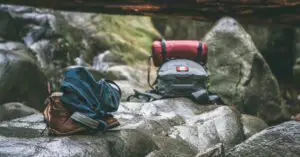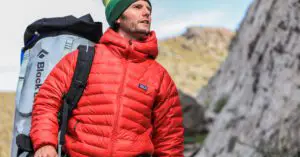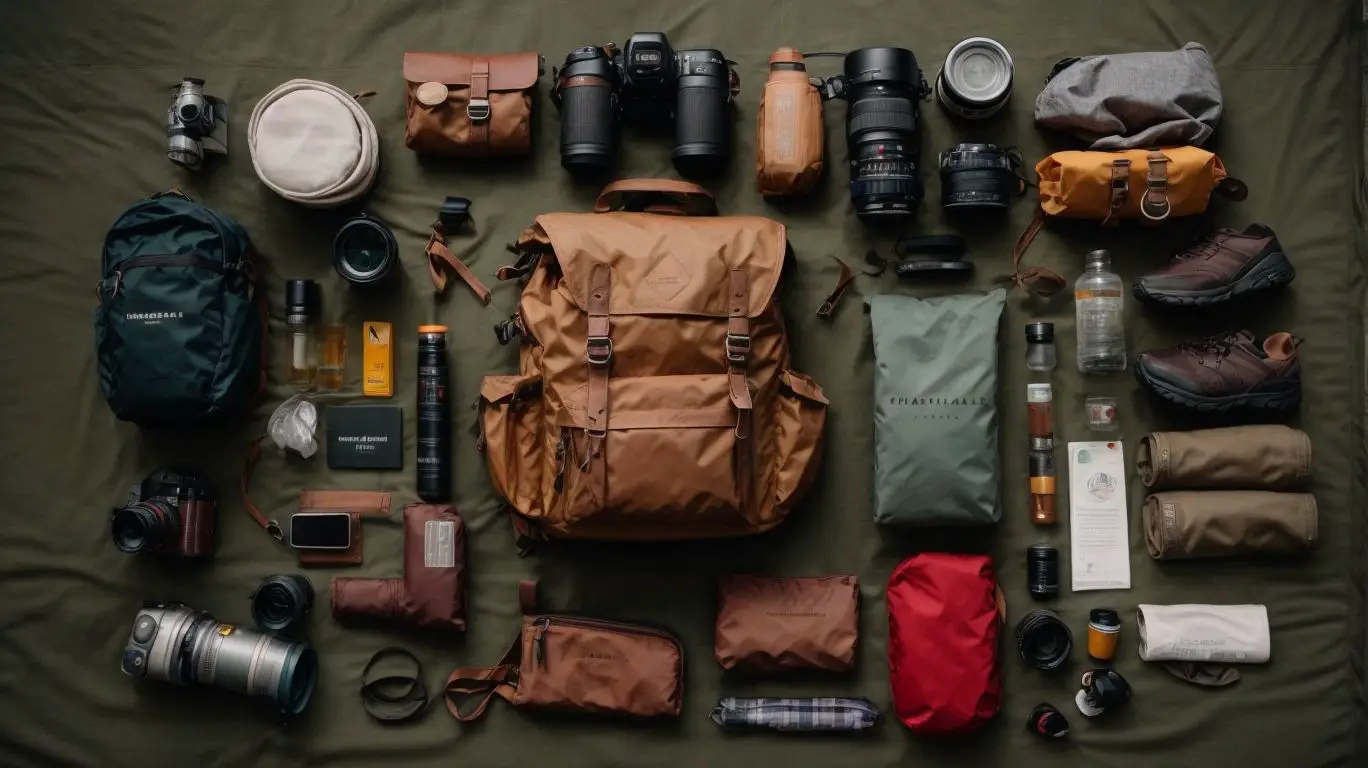How to Pack for a Day Hike
What you will learn in this Article
Properly packing for a day hike is essential to ensure a safe and enjoyable outdoor adventure. By packing the right gear and being prepared for any situation, you can make the most of your hike and have a memorable experience. Understanding the importance of packing properly and knowing what essentials to bring are key factors in planning for a successful day hike. Expert hikers emphasize the significance of packing efficiently to ensure comfort, safety, and convenience during the hike.
This informative article will guide you through the essential gear required for a day hike and provide tips on how to efficiently pack for your adventure. Whether you are a beginner or an experienced hiker, following these guidelines will help enhance your hiking experience and make your day hike a memorable one.
Importance of Packing Properly for a Day Hike



Properly packing for a day hike is crucial to ensure a safe and enjoyable experience in the great outdoors. The importance of packing properly for a day hike cannot be emphasized enough. Here are some important steps to consider when packing for your hike:
- Choose the right backpack size and fit to comfortably carry all your essentials.
- Check the weather forecast and pack appropriate clothing layers to stay prepared for changing conditions. This step is of utmost importance when it comes to packing properly for a day hike.
- Pack enough water to stay hydrated throughout the hike. The importance of packing enough water cannot be overstated. Check out our LifeStraw Personal Water Filter Review to supplement your hiking hydration needs!
- Bring enough food and snacks to maintain energy levels during the hike. This is an essential part of packing properly for a day hike.
- Carry a first aid kit with essential supplies for any minor injuries or emergencies. We have a Protect Life First Aid Kit Amazon Review, a considerable kit just for this purpose.
- Pack navigation tools, such as a map, compass, or GPS device, to stay on track. These tools are indispensable for packing properly for a day hike.
- Carry extra essentials like a headlamp, whistle, and multi-tool for safety and convenience. The importance of these extra essentials cannot be ignored when it comes to packing properly for a day hike. Check our Gerber Gear Shard Keychain review for a great compact and lightweight multi-tool!
Fact: Properly packing essential items like water, food, and navigation tools can greatly enhance the overall hiking experience while ensuring the safety of hikers. The importance of packing properly for a day hike is undeniable.
Essential Gear for a Day Hike



What are the essential gears for hiking? In this section, we’ll uncover the must-have items that will make your hike comfortable and enjoyable. From proper hiking shoes and socks to a well-stocked backpack, navigation tools, water and hydration systems, snacks, extra clothing layers, sun protection, and a first aid kit, we’ll cover all the essentials you need to pack. Get ready to gear up and hit the trails with confidence!
Proper Hiking Shoes and Socks
Choosing the proper hiking shoes and socks is vital to ensure a comfortable and safe day hike. Here are some crucial factors you should consider:
| Fit | Support | Traction | Waterproofing | Quality socks |
|---|---|---|---|---|
| Make sure that your hiking shoes provide a proper fit, allowing enough space for your toes to move freely without any pressure points or rubbing. | Look for shoes that offer excellent ankle support and a firm sole to prevent injuries on uneven terrains. | Opt for shoes with a grippy outsole to enhance traction on various surfaces. | If you plan to hike in wet conditions, it is essential to choose waterproof shoes to keep your feet dry. | Invest in moisture-wicking and cushioned socks to prevent blisters and provide utmost comfort for your feet. |
Backpack
When it comes to choosing a backpack for a day hike, the backpack is the key consideration. There are a few factors to consider when selecting a suitable backpack for your needs.
- Size and fit: Look for a backpack that is the appropriate size for your needs. It should be large enough to accommodate all your essentials, but not excessively large that it becomes cumbersome.
- Comfort: Opt for a backpack with padded straps and a back panel to ensure maximum comfort while hiking.
- Organizational features: Consider a backpack with multiple compartments and pockets, allowing you to easily access and organize your gear.
- Durability: Choose a backpack made from durable materials that can withstand the rigors of the trail.
- Weight: Look for a lightweight backpack to minimize strain on your back and shoulders.
With these considerations in mind, you can select a backpack that is comfortable, functional, and durable for your day hikes.
Navigation Tools
Navigation Tools are essential for a successful day hike. These tools help hikers stay on track and navigate through unfamiliar terrain. Here is a table showcasing some common Navigation Tools used during a day hike:
| Compass | A compass helps hikers determine their direction and find their way in case of getting lost. |
| Maps | Carrying detailed maps of the hiking trail provides valuable information about the route, landmarks, and potential hazards. |
| GPS Device | Global Positioning System (GPS) devices can accurately pinpoint the hiker’s location and track their progress along the trail. |
| Smartphone Apps | There are various navigation apps available that use GPS technology to display maps, track routes, and provide real-time information. |
| Topographic Maps | Topographic maps provide detailed information about the terrain, elevation changes, and geographic features. |
Water and Hydration System
- Water is crucial for maintaining hydration during a day hike.
- Carry an adequate amount of water to last throughout the entire hike, taking into account the duration and intensity.
- Invest in a dependable hydration system, such as a hydration bladder or water bottles.
- Research the water sources along the trail and filter or treat the water if necessary.
- Consider using electrolyte-enhanced water or tablets to replenish the minerals lost through sweat.
- Monitor your water intake and make sure to drink regularly, especially in hot and humid conditions.
- Avoid solely relying on natural water sources, as they may not always be safe to drink from.
Snacks and Meals
When planning for a day hike, it’s crucial to pack enough snacks and meals to sustain your energy throughout the journey. Here’s a table detailing the essential food items to include:
| Food Item | Quantity | Benefits |
| Granola bars | 2-3 bars | Provide quick energy and essential nutrients |
| Nuts and trail mix | A small bag | Offer a good source of protein, healthy fats, and sustained energy |
| Fresh fruits | 2-3 pieces | Contain vitamins, minerals, and hydration |
| Jerky or protein bars | 1-2 servings | Provide protein for muscle recovery and satiety |
| Peanut butter or cheese crackers | A small pack | Give a combination of carbohydrates, protein, and fats |
| Dehydrated meals | 1-2 packages | Offer a lightweight and easy-to-prepare option for longer hikes |
Pro-tip: Remember to pack an extra snack or two in case of any unexpected delays or emergencies. Happy hiking!
Extra Clothing Layers
When preparing for a day hike, it is crucial to remember the importance of packing extra clothing layers. This will ensure that you are adequately prepared for any changing weather conditions that may arise. Here are some key considerations to keep in mind:
- Layering: Dressing in layers is essential as it allows you to easily adjust your clothing to maintain comfort throughout your hike. Start by wearing a moisture-wicking base layer, which will keep sweat away from your body. Next, add an insulating mid-layer to provide warmth. Finally, finish off with a waterproof and windproof outer layer to protect yourself from the elements.
- Extra warmth: It’s always wise to pack a lightweight fleece or down jacket, especially for breaks or if you encounter colder temperatures along your hike. This additional layer will provide you with the extra warmth you may need.
- Rain protection: Don’t forget to include a waterproof jacket and pants or a poncho in your pack. This will help guard against any rain or wet conditions that you may encounter during your hike.
- Headgear: To keep your head warm, be sure to bring a hat or beanie. Additionally, it’s important to have a sun hat or cap to protect yourself from the sun’s rays.
- Gloves and socks: Pack a pair of lightweight gloves and extra socks to ensure that your hands and feet stay warm and dry throughout your hike.
Sun Protection
When going on a day hike, it is crucial to prioritize sun protection. Here are some important considerations to keep in mind:
- Wear a wide-brimmed hat to shield your face and neck from harmful UV rays, ensuring sun protection.
- Apply a broad-spectrum sunscreen with a high SPF rating to your exposed skin, promoting sun protection.
- Use UV-protective sunglasses to safeguard your eyes from the sun’s glare and harmful rays, ensuring sun protection.
- Consider wearing lightweight, breathable clothing that provides UV protection or has a high UPF rating, prioritizing sun protection.
- Take breaks in shaded areas to minimize direct sun exposure, ensuring sun protection.
- Stay hydrated to help your body regulate temperature and prevent sunstroke, promoting sun protection.
Prioritizing sun protection will guarantee a safe and enjoyable day hike experience.
First Aid Kit
A first aid kit is an essential item to pack for a day hike, as it provides the necessary supplies to handle common injuries and emergencies on the trail. Having a well-equipped First Aid Kit is crucial to ensure the safety and well-being of hikers.
- Bandages and dressings: Include a variety of adhesive bandages, sterile gauze pads, and adhesive tape in your First Aid Kit to dress wounds effectively.
- Antiseptic wipes and ointment: These supplies are vital for cleaning and preventing infection in cuts and scrapes. Make sure to include them in your First Aid Kit.
- Pain relievers: It is important to carry over-the-counter pain relievers like ibuprofen or acetaminophen in your First Aid Kit to manage common discomforts such as headaches, muscle aches, and pain.
- Tweezers and scissors: These tools are essential for removing splinters, cutting tape or clothing, and handling small objects, making them must-haves in your First Aid Kit.
- Blister care: To protect and treat blisters that may form during the hike, make sure to pack moleskin or blister pads in your First Aid Kit.
- Emergency blanket: In case of unexpected weather changes or injuries, having a lightweight and compact blanket in your First Aid Kit can provide warmth and shelter.
- Personal medication: If necessary, bring any prescribed medications along with clear instructions and dosage information in your First Aid Kit.
Tips for Efficiently Packing for a Day Hike
Being safe during a hike and packing efficiently for a day hike is crucial to ensure a smooth and enjoyable experience on the trails. Here are some tips for efficiently packing for a day hike:
- Create a checklist: Make sure to follow these tips for efficiently packing for a day hike. Create a checklist of essential items you’ll need, such as a map, compass, first aid kit, snacks, and water.
- Choose the right backpack: To pack efficiently for a day hike, it’s important to choose a lightweight and comfortable backpack with multiple compartments. This will help you organize your gear effectively.
- Layer your clothing: Dressing in layers is a smart way to adjust to changing weather conditions while hiking. Don’t forget to pack extra clothes like a rain jacket for any unexpected weather changes.
- Optimize space: Efficiently pack your clothes by using packing cubes or tightly rolling them. This will help you maximize the space in your backpack and make it easier to find what you need.
- Pack smart snacks: For a day hike, it’s important to choose lightweight and nutritious snacks. Trail mix, energy bars, and fruits are great options to keep you fueled and energized during your hike.
- Stay hydrated: Carrying enough water is essential for a day hike. Consider using a hydration bladder or water bottles with a filter to ensure a sufficient supply of clean water.
- Additional gear: Don’t forget to include some additional gear for emergencies and convenience. A multi-tool, sunscreen, insect repellent, and a headlamp are important items to have on hand.
Remember, following these tips for efficiently packing for a day hike is all about finding a balance between carrying essential items and minimizing unnecessary weight. Happy hiking!
Additional Considerations for Expert Hikers



When it comes to packing for a day hike, expert hikers know that there are additional considerations beyond the essential gear. In this section, we’ll explore what sets expert hikers apart and discover the key factors they take into account.
From packing emergency gear to the importance of having reliable emergency communication devices, we’ll uncover the secrets that make expert hikers well-prepared adventurers. Plus, we’ll delve into the principles of Leave No Trace, ensuring that nature remains unspoiled for future generations. Lace up your boots and get ready for some expert-level hiking insights!
Packing Emergency Gear
When going on a day hike, it is crucial to pack emergency gear to ensure your safety in case of unexpected situations. Remember to assess the potential risks of your hike and pack emergency gear accordingly to ensure your safety throughout your adventure. Here is a list of the essential emergency gear to pack:
- First Aid Kit: Include bandages, antiseptic wipes, pain relievers, and any necessary medications.
- Emergency Shelter: Pack a lightweight and compact emergency blanket or bivy sack for shelter in case of getting stranded.
- Fire-Starting Tools: Carry waterproof matches, a lighter, or a fire starter kit to help keep warm and signal for help.
- Signal Devices: Bring a whistle, a mirror, or a signaling device like a flare or an emergency strobe light for attracting attention.
- Extra Food and Water: Pack high-energy snacks and extra water to sustain yourself if you get lost or have to stay longer than expected.
- Navigation Tools: Carry a map, compass, and GPS device to help you navigate and find your way back on the trail.
In 2015, a hiker in the Grand Canyon National Park got stranded after sunset. He utilized his emergency gear, including the fire-starting tools and the signaling devices, to attract the attention of nearby canyon guides who ultimately led him back to safety. Packing emergency gear can be the difference between a challenging situation and a successful rescue.
Emergency Communication Devices
When embarking on a day hike, it’s crucial to have emergency communication devices at hand in case of unforeseen circumstances, ensuring your safety.
- Make sure to carry a fully charged cell phone along with a backup battery or power bank, serving as an invaluable emergency communication device.
- Consider including a personal locator beacon (PLB) among your essentials. PLBs are compact devices that can send distress signals to emergency services, aiding them in locating you in times of need.
- In areas with limited cell reception, two-way radios can be extremely useful for communication purposes.
- When venturing into remote regions devoid of cell service, a satellite phone becomes a lifeline for emergency communication.
- Don’t forget to pack an emergency whistle, which can produce a loud sound to attract attention and signal for help in emergencies.
Leave No Trace Principles
Leave No Trace principles are crucial to conserve the natural environment while participating in outdoor activities. Here is a comprehensive guide to follow:
- Plan ahead and prepare: Conduct thorough research on the area’s regulations and weather conditions.
- Travel and camp on durable surfaces: Make sure to adhere to established trails and camping areas to minimize any negative impact.
- Dispose of waste properly: Take responsibility for all trash and waste, including human waste, by packing them out.
- Leave what you find: Refrain from disturbing natural features or taking items as souvenirs.
- Minimize campfire impacts: Adhere to fire regulations and utilize established fire rings, if permitted.
- Respect wildlife: Maintain a safe distance from animals and avoid feeding or disturbing them.
- Be considerate of other visitors: Keep noise levels low and respect the privacy of fellow outdoor enthusiasts.
Frequently Asked Questions for How to Pack for a Day Hike
1. What clothing items should I pack for a day hike?
When packing for a day hike, it’s important to choose appropriate clothing. Opt for comfortable and breathable hiking pants or shorts, and consider wearing a moisture-wicking baselayer or a lightweight long-sleeve shirt. Don’t forget to bring a rain jacket and/or windbreaker in case of unexpected weather changes.
2. How much water should I bring for a day hike?
For a day hike, it is recommended to carry at least 1.5 liters of water. Additionally, consider using a water purification system or tablets to ensure a clean water source along the way. Juice boxes can also be a handy option for an extra energy boost.
3. What navigation equipment should I bring for a day hike?
When planning your day hike, make sure to bring essential navigation tools such as a topo map, a GPS device or phone app with downloaded GPX files for offline use. These tools will help you navigate the trail and stay on track. Consider using a hiking tracker like Cairns that can send alerts to friends and family.
4. Are trail runners suitable for day hiking?
Yes, trail runners can be a great choice for day hiking. They are lightweight and provide good support and protection for your feet. Popular options like Altra Lone Peak and Hoka Speedgoat offer comfort and versatility for various trail conditions.
5. What essential equipment should I pack for a day hike?
When preparing for a day hike, there are a few essential items you should pack. These include a daypack, basic first aid kit, sun protection items like sunglasses, sunscreen, and a hat, as well as snacks with nutritional value like trail mix, dry fruits, and DIY sandwiches. Don’t forget to pack in a travel mug or water bottle for hydration on the go.
6. How should I prepare for a day hike in remote wilderness?
If you’re planning a day hike in remote wilderness, it’s important to prep early and thoroughly. Study guidebook pages, check trail conditions, and ensure you have proper navigation equipment. Consider bringing extra emergency essentials like a Sawyer water filter, camping chairs, and trekking poles for added stability.
